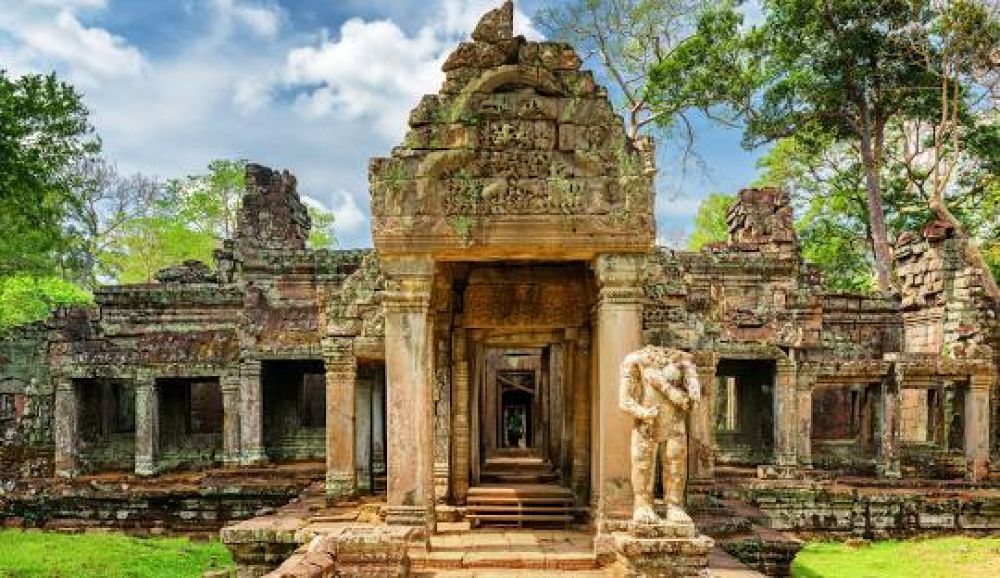

Preah Khan, located in the majestic city of Siem Reap, Cambodia, is a storied temple complex that has captivated the minds and hearts of historians, archaeologists, and travelers alike. Its name, which translates to “Royal Sword,” is a testament to its historical significance and grandeur. Preah Khan, built in the 12th century during the reign of King Jayavarman VII, is part of the Angkor Archaeological Park and sits at the northeast of Angkor Thom, another historical marvel.
Initially constructed as a Buddhist monastery and learning center, Preah Khan eventually transformed into a significant shrine for both Buddhism and Hinduism, showcasing the religious versatility that characterized the Khmer Empire. It served not just as a hub for spiritual enlightenment, but also as a symbol of political might, as it was built on the battlefield where King Jayavarman VII won a pivotal victory against the invading Chams. Today, Preah Khan remains an awe-inspiring reminder of Cambodia’s rich and diverse history.
The history of tourism at Preah Khan is relatively recent when compared to its ancient origins. Initially, the site was shrouded in jungle and less accessible to the world. It was not until the late 19th and early 20th centuries, during French colonial rule, that Preah Khan and other Angkor temples started receiving systematic restoration efforts and scholarly attention, gradually putting them on the map for pioneering tourists and scholars.
After Cambodia's independence and subsequent periods of unrest, tourism in Siem Reap, and Preah Khan specifically, faced significant challenges. The region saw a resurgence in interest only towards the end of the 20th century as it started to stabilize, leading to increased tourism investment and conservation efforts in the early 21st century.
In the past few years, Siem Reap has emerged not only as a historic destination but also as a hub for cultural immersion and adventure tourism. Tourists visiting Preah Khan today are often seeking a more holistic experience, looking to combine their temple explorations with community-based tours, culinary discoveries, and even eco-friendly initiatives.
Responsible Tourism is another growing trend, where visitors are conscious of their environmental footprint and cultural impact on the local communities. There’s a growing preference for tours that offer insights into the local way of life without disrupting it, as well as services that practice sustainability.
Digital Integration is reshaping the tourism landscape, with virtual tours and augmented reality apps providing new ways to experience Preah Khan. This technological shift complements the physical travel experience and offers more interactive and educational value to visitors.
Siem Reap's tourism sector is also focusing on improving accessibility and facilities to ensure a better experience for travelers while preserving the integrity of its historical sites. Preah Khan itself is part of an ongoing global conversation about balancing conservation with visitor access, exemplifying the complexities faced by world heritage sites today.
As we move further into the 21st century, Preah Khan continues to be a testament to Cambodia's enduring allure and the evolving relationship between history, culture, and tourism.